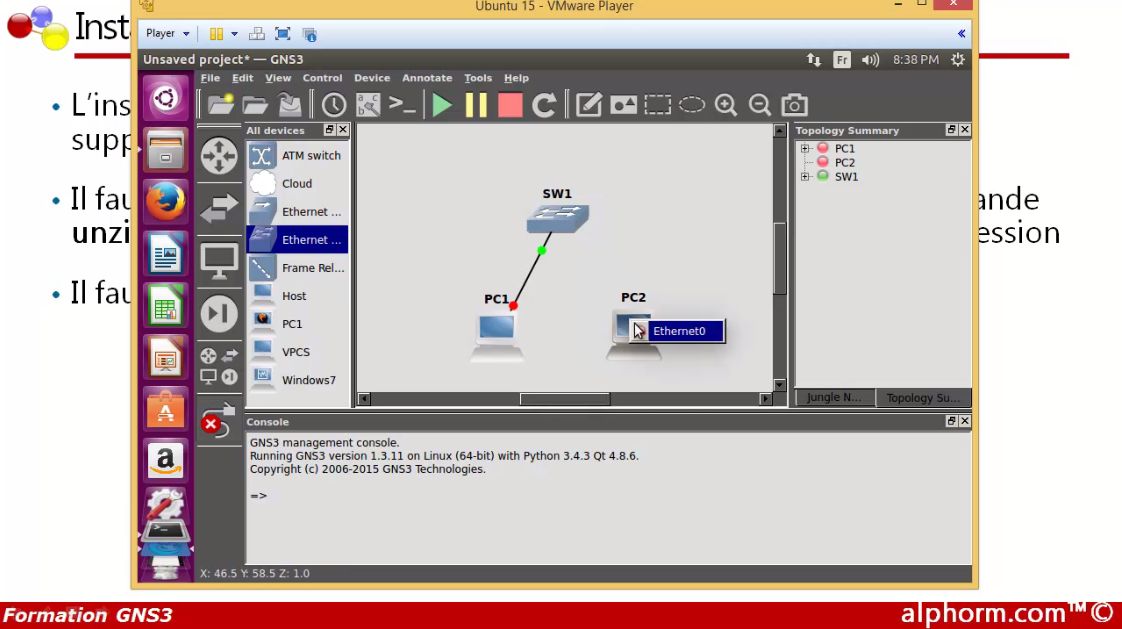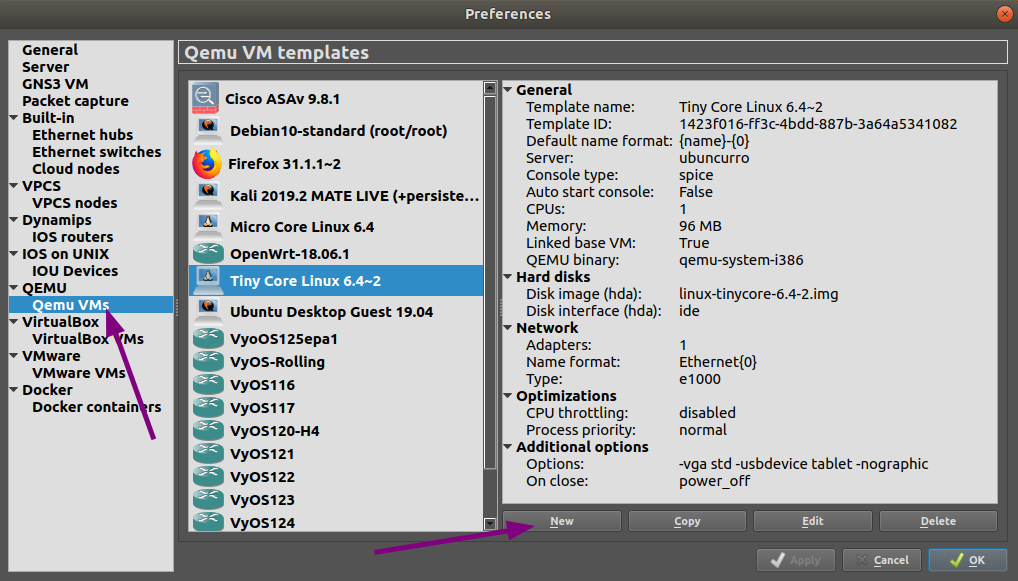
- #HOW TO USE TELNET VPCS ON GNS3 HOW TO#
- #HOW TO USE TELNET VPCS ON GNS3 INSTALL#
- #HOW TO USE TELNET VPCS ON GNS3 PASSWORD#
- #HOW TO USE TELNET VPCS ON GNS3 PC#
When you look at the image below, you can see that the default VLAN number is 1. You can check the existing structure using the show vlan-switch command in privileged mode on the switch. Now, follow the steps below to create a VLAN. Therefore, you can create different VLANs for departments such as accounting, IT, and then provide routing between them. The use of VLANs in a network provides a more organized configuration.

#HOW TO USE TELNET VPCS ON GNS3 PASSWORD#
Now enter the user name and password you created for the telnet connection. In step 2, we created a new user for the Switch.

To make a telnet connection from the virtual computer to the Switch’s VLAN1 management interface, execute telnet 192.168.10.10 at the CMD prompt. Now test the connection by pinging the VLAN’s management interface from the VMware virtual machine. If you have not configured the topology, configure the virtual machine as follows. IT(config-vlan)# ip address 192.168.8.10 255.255.255.0Īfter adding and running the virtual machine to the network topology, check the TCP/IP settings with the ipconfig command on the CMD prompt. Execute the following command to assign an IP address to the default VLAN1. To assign IP addresses to switches, you must configure the VLAN’s management interface. IT(config)# username cisco password cisco123Įnter TEXT message. Now, to configure Switch’s hostname, telnet settings, and passwords, execute the following commands at the command prompt. Because you don’t have to be near the Switch all the time.
#HOW TO USE TELNET VPCS ON GNS3 PC#
Therefore, you must use Telnet to configure the Switch with a remote connection from a PC on the network.

When configuring the Switch for the first time, we usually connect and configure a computer. In this topology, we have used the Layer 3 Switch, which works in the Network layer of the OSI layer. Afterwards, create a topology as in the image below. So with this Lab, you will be able to make real world hands on exam practices etc….First, run the GNS3 program, and create a new project. and place the router’s IP address as a Host name you see in the picture, R1 IP address is 192.168.11.250 / port 23 For telnet.Īs you see, we have accomplished telnet connection from VM to Router.
#HOW TO USE TELNET VPCS ON GNS3 INSTALL#
Now you will need to install Putty for telnet connection on your Windows VM. We have successfully configured the router. )Įnable secret 4 tnhtc92DXBhelxjYk8LWJrPV36S2i4ntXrpb4RFmfqY Router Configuration ( default gateway 192.168.11.131 same as GNS3 VM Server. Ĭonfigure Username password for Telnet connection. GNS3 VM IP ADDRESS 192.168.11.131/24 ***( going to be Default Route for Router and windows VM ) The important configuration is IP / Subnet ,Default Gateway.

Note* You can disregard DNS configuration, I have configured active directory domain controller for next lab. On Windows 7 VM issue the ncpa.cpl command which will be open your adapter settings. Make sure you have on the same network with all your machines in GNS3Ĭheck Router IP address, computer IP address. issue the ncpa.cpl on CMD which will open your adapter settings. I have already installed 1 Windows ServerR2 and 2 Windows 7 machines on my VMware.įirst thing, your VMS, and gns3 should be on same NIC ( Network Interface Card ) if you follow my picture, I have configured them on VMnet1 which is no Host-to-Host connection, I have no out going network traffic to my ISP.
#HOW TO USE TELNET VPCS ON GNS3 HOW TO#
I will demonstrate you guys how to connect (ping.telnet) VM’s to your GNS3 router, switch Maybe, later on, we can upgrade to Firewall.This lab will be basic and easy to understand I hope you will like it.


 0 kommentar(er)
0 kommentar(er)
